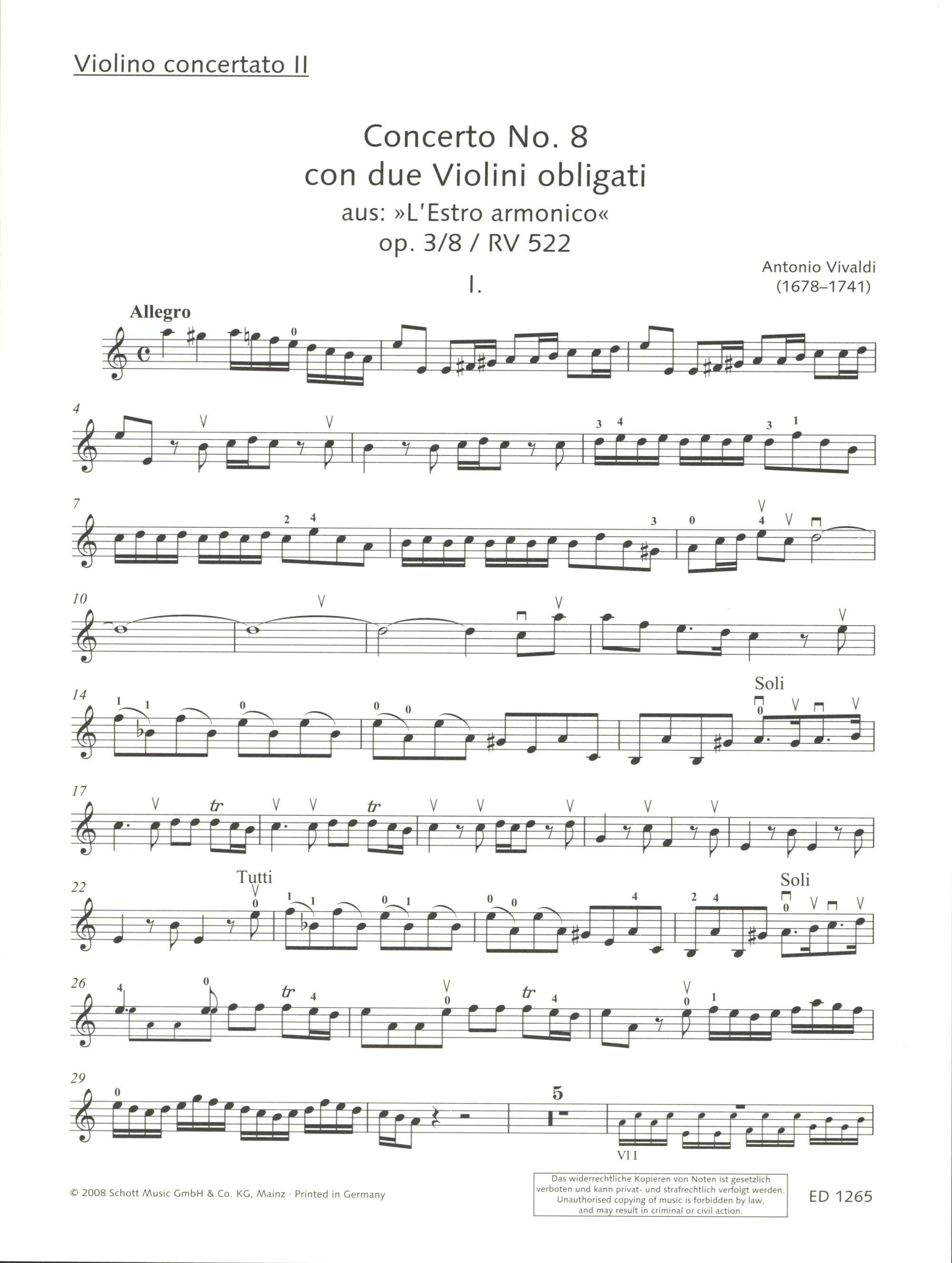
The series is edited by KurtSassmannshaus, the internationally renowned violin teacher andco-author of the Sassmannshaus violin method. The editions include a solo violin part and a pianoreduction for the accompanist. The third movement, beginning with fanfare arpeggios in canon from the soloists, is in a triple metre and brings the work to a vigorous conclusion.This series comprises the most popular beginner concertos forviolinists. It is in a languid mood, set with sustained chords from the strings. In the middle movement of only six measures, the trumpets are silent, with both the style and harmony being unsuitable for the instrument. In the first movement, the strings modulate to a minor key, which returns to the major when the trumpets re-enter. The two trumpets usually play together in the solo passages, but at times also play with the strings in the tutti parts. The outer movements display the virtuosity of the soloists in passage-work and fanfares. The concerto is structured in three movements: Vivaldi also used the second movement for his Violin Concerto in C major, RV 110.

It was first published, edited by Gian Francesco Malipiero, by Casa Ricordi in 1950. Ī manuscript was found in the Renzo Giordano Collection at the National Library in Turin, which holds much of Vivaldi's personal collection. It was written for the natural trumpet of the time as a valveless instrument this was limited to the notes of the natural harmonic series which means that its music tends to stay close to its home key.

It seems unlikely that he wrote it for the Ospedale della Pietà, because the ensemble there comprised voices, strings and keyboard. It is his only trumpet concerto it is not known for whom he wrote it.

Vivaldi composed the Concerto for Two Trumpets in C major possibly in the 1720s in Venice. It was published by Ricordi in 1950 after its manuscript was found in a Turin library. Antonio Vivaldi's Concerto for Two Trumpets in C major, RV 537, is a concerto for two trumpets, string orchestra and basso continuo in three movements, believed to have been composed in the 1720s.


 0 kommentar(er)
0 kommentar(er)
